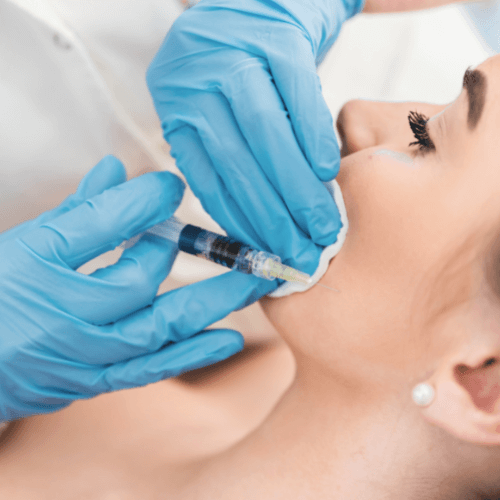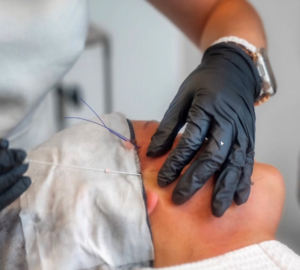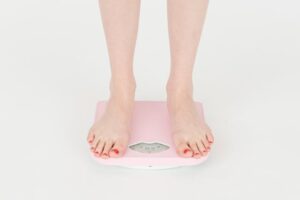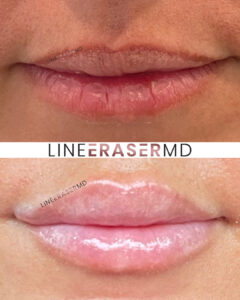Age or genetics are the reason some people experience loose skin and puffiness in the lower parts of their faces. Those who wish to correct their jawline or chin area but don’t want to undergo any invasive surgical procedures can find a comforting solution in dermal fillers.
A jawline dermal filler can achiever a contoured look resulting in a more symmetrical and balanced face. . However, not all jawline filler treatments are created the same, and the doctor’s expertise also plays a significant role.
Before opting for a jawline filler, you should get information on what the treatment entails and what kind of results you can expect. In this article, we’ll cover all those topics and discuss the dermal filler jawline cost and possible drawbacks of this treatment you should consider.

What are Jaw Fillers?
The main component of dermal fillers is hyaluronic acid. This sugar compound is naturally produced in the skin, keeping it tightened and hydrated. With the passing of age, its natural production drops, and that’s where dermal fillers can step up. As we age, our collagen production slows, and this is where dermal fillers come into play. Jawline dermal fillers represent a non-invasive anti-aging treatment. You can achieve a sculpted jawline and define your chin with as little as one treatment. Filler should always be carefully injected by a skilled and experienced practitioner. Patients opts for jaw fillers in hopes of removing wrinkles, enhancing their chin or correcting the folding and sagging skin around their jaws – and that’s precisely what they get. The sessions usually last 30 to 60 minutes, depending on the desired result. By strategically injecting the acid into your jawline area, you can smooth out the fine lines, eliminate jowls, and create a fresh look with more volume. The hyaluronic acid also improves the skin’s ability to produce collagen and elastin, providing it with long-term support.Benefits of Jawline Filler
The results of jawline dermal fillers are visible immediately. This means you can restore balance to your chin and jaw, especially in the case of an asymmetrical jawline, starting from the first treatment. For most dermal filler jawline male and female users, the treatment can help create a more oval-looking face or contour the jawline and give it a sharper look. This helps frame your face and reduce the effects of volume loss in its lower parts. Last but not least, the treatment can help you add proportion to your chin as well as strengthen it. The fillers can even help define your neck, improving your youthful glow.How much do Jaw Fillers cost?
Since it is primarily a cosmetic procedure, jawline treatments aren’t covered by medical insurance in the US. The cost of the fillers may vary, mainly depending on the doctor prescribing them as well as the city you’re getting them in. However, to determine how much is dermal filler for jawline you need to consider the type of the filler and the injected amount. Older patients with extensive volume and bone loss around the chin will need larger amounts to achieve the same results over time. Most doctors recommend Restylane Lyft, Juvederm Volux, Voluma and Radiesse fillers, which cost between $800-$1000 per syringe. The amount of syringes required varies from patient to patient. Since dermal fillers are broken down and metabolized by the body, renewal injections are necessary to keep up the effects. Depending on the patient, results may be visible for up to 2 years. However, doctors recommend follow-up treatments approximately every year, or as needed.How Does Non-Surgical Jawline Enhancement Work?
The first step of the procedure is a doctor consultation, where you can point out your problems and discuss your aesthetic goals. A practitioner will also advise you on how much dermal filler for jawline is needed for the desired outcome. . Once you settle the treatment plan, the doctor will administer a topical anesthetic to the area to help minimize any pain or tenderness during the treatment. Then, the specialist will make several strategic injections, usually on both sides of your face, to ensure symmetry. The procedure usually takes between 20 to 60 minutes, and you’ll be able to see the results as soon as you get up from the chair.Injectables and Dermal Fillers for Jawline Enhancement
To determine what kind of filler you need for jawline augmentation or contouring, you should first know what you want from the procedure. Like with lip fillers, not all dermal fillers will work the same on all patients. Currently, the best dermal filler for jawline options on the market are:- Restylane Lyft;
- Juvederm Voluma ;
- Volux;
- Raddiese;
- Sculptra Aesthetics.
What’s the Jaw Filler procedure like?
Before getting filler injections, some preparations for the face need to be made. Below is a full breakdown of the process and tips on what to do before and after.Before the procedure
A consultation with a doctor is mandatory before scheduling a procedure. Additionally, here are a few pointers you should follow:- Avoid alcohol – You shouldn’t intake any alcoholic drinks at least two to three days before the procedure.
- Inform your doctor about any pills or other types of medication you take – If you’re taking pain regulation pills, blood thinners or some specific supplements and oils, you might need to stop taking them a couple of days before you undergo the procedure.
- Leave off your skincare routine – Those who frequently apply retinoids, retinol or glycolic acid will have to pause their routine and wait a couple of days to get the injections.
- Don’t irritate the skin – Avoid all hair removal products, as well as tweezers, a few days before the procedure. The treatment causes swelling, and these products make the skin prone to more significant scarring and itching.
During procedure
It’s mandatory to avoid makeup and other products from your facial area on the day of the treatment.- The practitioner will administer a local anesthetic to numb the chin area.
- After you’ve lost sensitivity, the doctor will start strategically injecting small amounts of dermal fillers under your skin, along your jawline and bone (mandible).
- The doctor will examine the effect of each injection during the whole procedure.
After procedure
Immediately after the injections, you may notice some redness or bruising. Swelling is also expected; however, you can apply ice, and it will soon subside. Strenuous physical activity and exposure to light are strictly forbidden in the days following the procedure. You can also hold off the use of makeup or any skincare products to avoid getting an infection.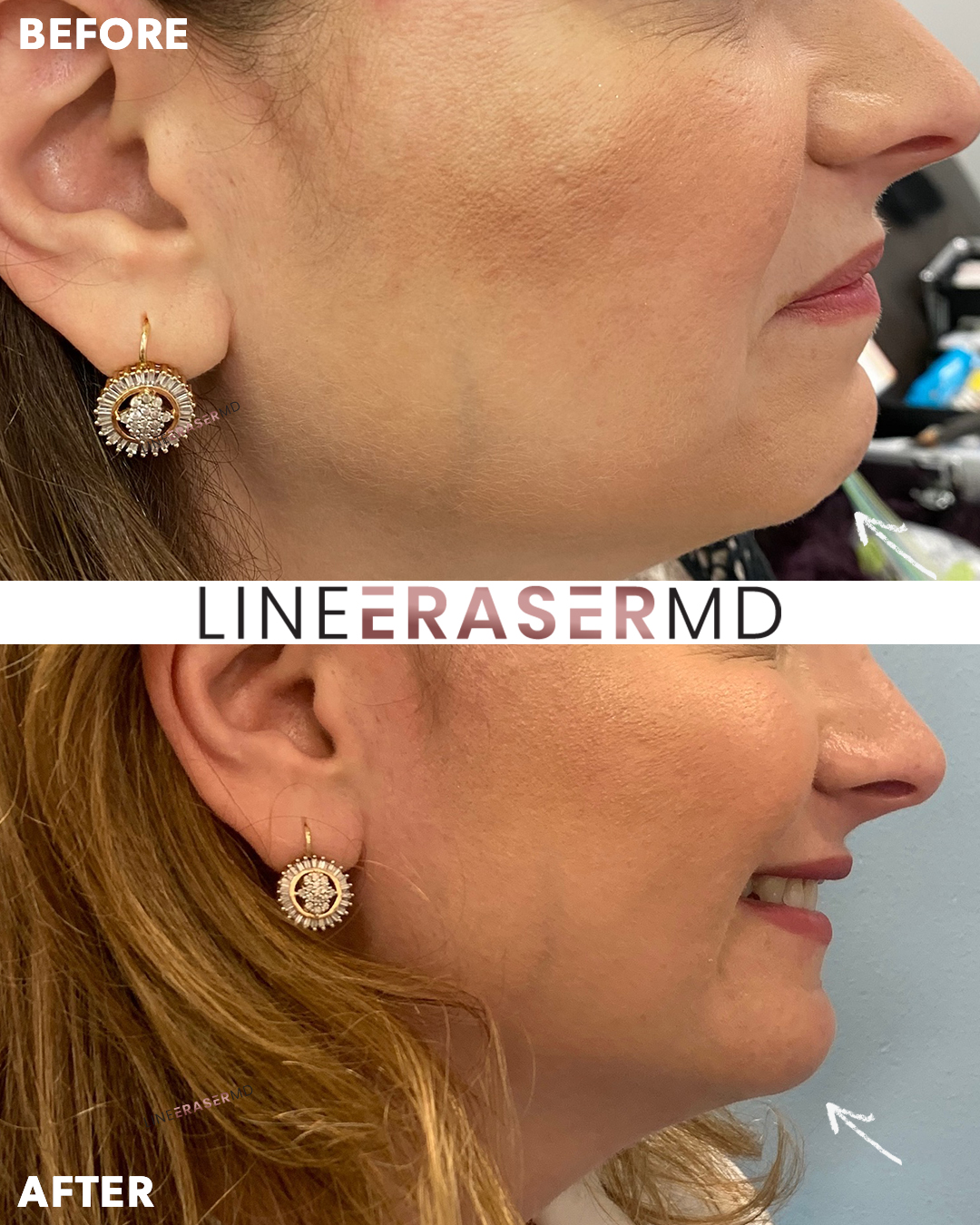
What to Expect When Getting Jawline Filler
While the jawline dermal treatments are relatively quick, the overall procedure may bring you some discomfort. Some patients may have mild sensitivity or swelling during the process, even with an anesthetic. The effect of the jawline fillers is visible almost right away. However, to experience the full results, you might have to wait a few days, up to two weeks for the product to fully settle and for all swelling to resolve. Some swelling immediately after the treatment is normal and usually isn’t severe. It can take up to 36 hours for the swelling to go away; however, most patients have stated that their swelling subsided in less than a day. Bruising and sensitivity to touch are also common and can be reduced with over-the-counter pain medication. The components of dermal fillers can make your skin sensitive to light. Thus, avoiding direct sunlight for at least a day or two after the procedure is imperative. You can keep up with your daily routine as soon as you leave your doctor’s office; however, you should avoid working out for 24 hoursAny side effects or complications from Jaw Fillers to be aware of?
As with all medical procedures, jawline fillers don’t come without potential risk. Most side effects are easily bearable and pass within a week; however, some complications may occur in extreme cases. Unqualified practitioners pose the most significant risk. Choosing an unreliable injection administrator may create a chain reaction of unwanted side effects that harm your health. In most cases, patients experience mild side effects such as:- Temporary pain and swelling;
- Redness around the injected spot;
- Itching;
- Acne or pimples.


